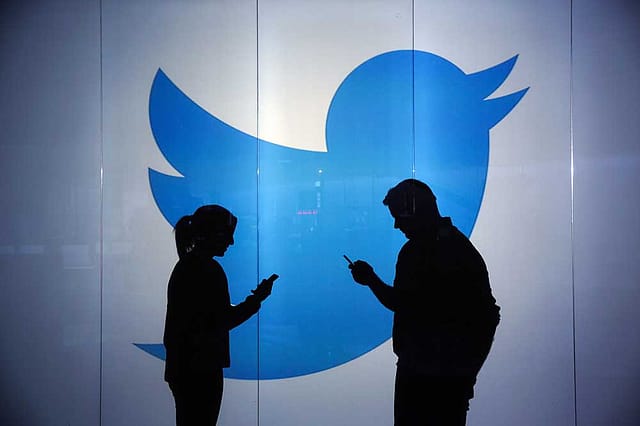Antisocial Media

IF TWITTER WAS weighed as boxers are, it would be a flyweight in the social media arena.
Twitter is relatively tiny. According to businessofapps.com, its reach (over 300 million monthly active users) is dwarfed by Facebook (2.8 billion active users), WhatsApp (2 billion) and Instagram (1 billion).
Twitter's market cap ($46 billion) is a fraction of Facebook's ($936 billion) as of June 2021. Its revenue for the year ending December 31st, 2020, was $3.7 billion on which it made a loss of $1.1 billion. Facebook's 2020 revenue was roughly $86 billion and net profit $29 billion.
Twitter punches above its weight for two reasons. One, it sets the political narrative because most of its influential users are politicians, journalists and academics. Two, unlike Facebook, Instagram and LinkedIn, it doesn't require personal identity authentication. So, bots proliferate.
Twitter, thus, is shaped like a pyramid: a narrow top of influential, agenda-setting users and a wide base of followers. Other platforms have flat structures and insist on authentic identification. Bots and impersonators get weeded out.
When you are faceless and anonymous, abuse and toxicity are natural corollaries. Twitter is built to generate controversy by its very structure. Influential handles with lots of followers can be attacked by anonymous handles with few followers but diverse agendas: ideological, communal, social and personal.
Twitter is thus pre-programmed to be toxic. The platform has protocols in place to prevent tweets that are homophobic, anti-Semitic, misogynistic or Islamophobic. But policing by Twitter is poor and prejudiced.
The solution to cut abuse, reduce toxicity and make Twitter in India a safe place is obvious: make authentic identification by name, supported by Aadhaar, mandatory. But that could reduce Twitter's allure. People who have an axe to grind, but lack the courage to grind it openly, are Twitter's mainstay. They form the vast majority of its 330 million users.
Those at the top of the Twitter pyramid are flattered by the apparent response they get—thousands of likes and retweets from this army of anonymous handles, some of whom are professional trolls, some bots and some just ordinary folk cruising Twitter out of curiosity.
It's like standing by at Speakers' Corner in London's Hyde Park, listening to two Bible and Quran-carrying ideologues arguing over the superiority of their respective faiths. Like Hyde Park, Twitter provides the platform and is happy to stir the pot.
The paradox of Twitter is that if you try to improve it by sanitising it, you will probably kill it.
Facebook may have 2.8 billion users but young people have largely abandoned it for being boring. Instagram is thick with celebrity and glamour but little substance. LinkedIn is for business networkers and earnest, pinstriped exchanges.
That leaves flyweight Twitter to set the day's trends—political, social and economic.
Founder and CEO Jack Dorsey knows exactly what he's doing. He is a self-confessed Left-leaner, which in itself isn't a disqualification to run a social media platform. What does become a problem is when he lets his ideology influence official policy.
Twitter obviously can't afford to alienate India for too long. Blocked in China, that would leave it without three billion potential users. Dorsey may be a leftist. But like all leftists, he has a keen eye on profit.
Dorsey knows that Twitter in its present form can't make much money. It is exploring e-commerce as an option to monetise its user base. It is also beta-testing allowing influencers and creators to monetise their content on Twitter as YouTube and Instagram do. Twitter, though, is structured for battle, not e-commerce or content monetisation.
Most of Twitter's innovations have failed to get traction. Its voting option is hardly used anymore. Its more recent audio-tweet function could have converted Twitter into a podcast platform, but hasn't yet taken off.
Like other social media platforms, Twitter uses third-party fact-checkers. But the identity of these fact-checkers and their political neutrality is not disclosed. User handles are often suspended or withheld arbitrarily. Handles that spew hate are, equally often, left unpunished.
Twitter is unique among social media platforms to shadowban certain handles and cull or cap their followers—usually to penalise them for espousing causes Twitter opposes. For a platform committed to freedom of speech, Twitter's editorial decisionmaking is opaque. Besides, editorialising is the prerogative of publishers, not intermediaries.
If you want to be an editor, don't expect safe harbour protection. Those who live by the sword, must be prepared to die by the sword.
